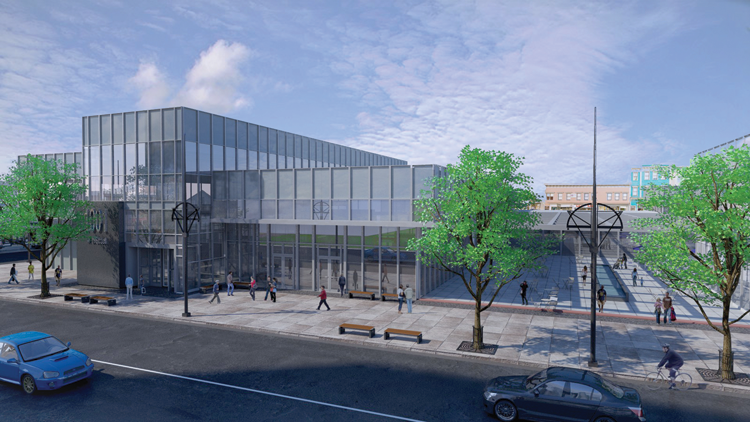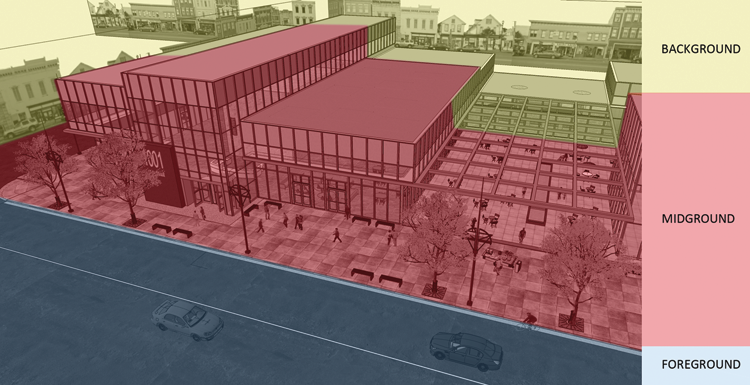Composition
Composition refers to the placement, arrangement, and organization of visual elements in a scene. Composition, including placement of detailed components, helps determine the focus of attention in a rendering. This section deals with composition as it pertains to the placement of components and filling in a scene to make it look complete.
Composition Zones
Camera views have foregrounds, midgrounds, and backgrounds. These three zones are found in most images, including eye-level views, bird’s eye views, and elevated camera scenes. For modeling purposes, components and objects should be placed in these zones to create focus. In general, the midground is where the render view will focus. This is usually true for architecture, interior design, and site renderings (Fig. 15.3, Fig. 15.4, Fig. 15.5, Fig. 15.6).
Foreground
The foreground is the front area of the scene, closest to the viewer. Model detail in the foreground is useful for drawing attention to the midground, the area where focus is usually needed (Fig. 15.7, Fig. 15.8).
Fig. 15.3: The rendering of this building and site will be analyzed to show composition zones (Su Podium).

Fig. 15.4: In this composition, blue represents the foreground, red the midground, and yellow the background.

Fig. 15.5: This interior ...
Get Rendering in SketchUp: From Modeling to Presentation for Architecture, Landscape Architecture and Interior Design now with the O’Reilly learning platform.
O’Reilly members experience books, live events, courses curated by job role, and more from O’Reilly and nearly 200 top publishers.

